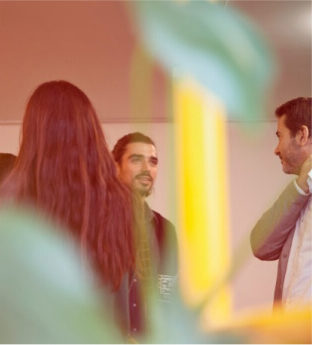When Viewers Become Part of the Masterpiece
Gone are the days when art was something you simply observed from a respectful distance. Today's most compelling exhibitions are breaking down the barriers between artwork and audience, creating experiences that envelope viewers in worlds of light, sound, and sensation. This shifting paradigm is revolutionizing how we interact with art, and it's transforming traditional gallery spaces into portals of experience.
The evolution from passive viewing to active participation represents more than just a trend – it's a fundamental shift in how we consume and appreciate art. As traditional boundaries blur, galleries are becoming stages for experiences that challenge our perceptions and redefine what art can be.
The Psychology of Immersion
When you step into an immersive art installation, something remarkable happens in your brain. Unlike traditional art forms, where the viewer remains separate from the work, immersive experiences trigger multiple sensory pathways simultaneously. This multi-sensory engagement creates stronger neural connections, leading to more vivid memories and deeper emotional responses to the artwork.
Research has shown that immersive art experiences can induce states of flow – that coveted mental state where time seems to dissolve and we become fully present in the moment. This level of engagement is what many contemporary artists are seeking to achieve, creating works that demand more than just our visual attention.
Technology Meets Tradition
The marriage of cutting-edge technology with traditional artistic mediums has opened up unprecedented possibilities. Digital projections dance across classical sculptures, augmented reality transforms empty spaces into vibrant landscapes, and interactive installations respond to the mere presence of viewers. Yet, amidst all this innovation, the fundamental purpose of art remains unchanged: to move us, to make us think, and to help us see the world differently.
Contemporary artists are leveraging tools like motion sensors, artificial intelligence, and virtual reality not as gimmicks, but as genuine mediums of expression. These technologies allow for the creation of responsive environments that can adapt and evolve based on audience interaction.
The Curator's Challenge
Today's curators face an intriguing challenge: how to balance the spectacle of immersive installations with the contemplative nature of traditional gallery spaces. The solution often lies in creating dynamic exhibitions that guide visitors through varying levels of engagement, from quiet reflection to full participation.
The most successful immersive exhibitions maintain a delicate equilibrium between innovation and artistic integrity. They use technology and interaction not as ends in themselves, but as means to deepen the artistic narrative and enhance the viewer's connection with the work.
Looking Forward
As we move deeper into this new era of experiential art, the possibilities seem limitless. Pop-up installations are appearing in unexpected urban spaces, virtual reality is enabling remote access to exhibitions, and artificial intelligence is helping create adaptive art experiences that evolve with their audiences.
Yet amid all this change, the essential power of art remains constant: its ability to transform our perspective, challenge our assumptions, and connect us with something larger than ourselves. The rise of immersive art isn't replacing traditional forms – it's expanding the vocabulary of human expression and inviting us all to be part of the conversation.
In this brave new world of art, the viewer is no longer just an observer but a vital participant in the creative process. As galleries continue to embrace these innovative approaches, they're not just showing us art – they're inviting us to live inside it.



